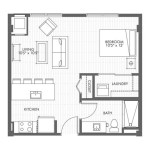How to Design a Sustainable Homes Using Container House Plans
Sustainable homes are becoming increasingly popular as people seek to reduce their environmental footprint and live more ethically. Container homes, constructed from repurposed shipping containers, offer a unique and eco-friendly approach to sustainable living. The use of repurposed materials reduces waste and minimizes the environmental impact of construction. This article will explore how to design sustainable homes using container house plans, highlighting key considerations for achieving environmental and economic benefits.
1. Site Selection and Orientation
Site selection plays a crucial role in maximizing the sustainability of a container home. Choosing a location that receives ample sunlight for passive solar heating is essential. A south-facing orientation, in the Northern Hemisphere, allows for maximum solar gain during the winter months. Consider the prevailing wind patterns, as well as the topography, to ensure natural ventilation and minimize energy consumption for heating and cooling.
Before finalizing the site, assess the existing tree cover and potential for planting more trees to provide shade during the hotter months, further reducing energy demands. Utilize the natural elements of the site to create a harmonious and eco-friendly living environment.
2. Insulation and Energy Efficiency
While shipping containers provide a sturdy and durable framework, they are notorious for their lack of insulation. Adequate insulation is vital for maintaining comfortable temperatures inside the home, particularly in extreme climates. Insulate walls, floors, and ceilings to minimize heat loss in winter and prevent excessive heat gain in summer.
Choose high-performance insulation materials with a low embodied energy, such as recycled cellulose, mineral wool, or spray foam. Consider the utilization of energy-efficient windows with high-performance glazing to maximize natural daylight and reduce heat loss. The use of double- or triple-paned windows and doors can significantly contribute to energy savings.
3. Sustainable Building Materials and Practices
The sustainability of a container home extends beyond the initial repurposing of the containers. Choose building materials that are sourced locally, minimizing transportation emissions and supporting local economies. Incorporate sustainable building practices, such as using reclaimed wood for flooring or countertops, salvaged building materials, and utilizing low-VOC paints and finishes.
Consider the potential for utilizing recycled materials in construction. For example, incorporating recycled plastic decking, bamboo flooring, or recycled concrete would reduce the environmental impact of the home and contribute to a greener building solution. These choices not only minimize resource consumption but also contribute to a healthier indoor environment for the occupants.
4. Water and Wastewater Management
Container homes offer opportunities for implementing sustainable water and wastewater management systems. Consider rainwater harvesting systems to collect rainwater and utilize it for landscaping or household purposes, reducing reliance on municipal water supplies. Install low-flow fixtures, such as toilets and showerheads, to conserve water usage.
Implement an on-site greywater treatment system to reuse wastewater from showers, sinks, and laundry for irrigation or flushing toilets. This reduces the environmental impact of wastewater discharge and minimizes the need for chemical treatment facilities. The choice of suitable wastewater treatment methods depends on local regulations and site conditions.
5. Renewable Energy Integration
Integrating renewable energy sources is a key pillar of sustainable home design. Consider installing solar panels on the roof or integrating a wind turbine to generate electricity from renewable resources. These systems can offset energy consumption from the grid, reducing reliance on fossil fuels and lowering energy bills. Evaluate the available solar insolation or wind resources of the site to determine the most suitable renewable energy options for the home.
Explore the feasibility of integrating energy-efficient appliances and lighting fixtures. Choose appliances with high Energy Star ratings to minimize energy consumption. Utilize LED lighting, which consumes significantly less energy than traditional incandescent bulbs, further reducing energy consumption.
By incorporating these sustainable design strategies, you can create a container home that is both environmentally responsible and economically viable. The use of container homes can contribute to a more sustainable future by promoting resource conservation, minimizing waste, and reducing reliance on non-renewable energy sources. This innovative approach to building houses offers a compelling alternative to traditional construction methods, paving the way for a more sustainable and ecologically mindful way of living.

Container House Plans Innovative And Sustainable

E House Plan Inhabitat Green Design Innovation Architecture Building

Unconventional Living 5 Container Home Designs And Plans To Inspire

Container Homes Icgreen

Can Container Homes Outpace Traditional Housing A Battle Of Cost Construction Sd And Sustaility Guangdong Zhonghuilvjian Moving House Technology Co Ltd

Luxury Sustainable Living 30 Modular Container Home 2 Bedrooms Full Bath Kitchen 585 Sf

Container Home Floor Plans Structures Layouts More Ideas

Innovative Container Home Plans Affordable Sustainable And Modern Living Kit

Container Home Designs Off Grid World

Architectural Designs Made Of Containers That Exhibit Great Waste Repurposing Sustainable Living Yanko Design
Related Posts








